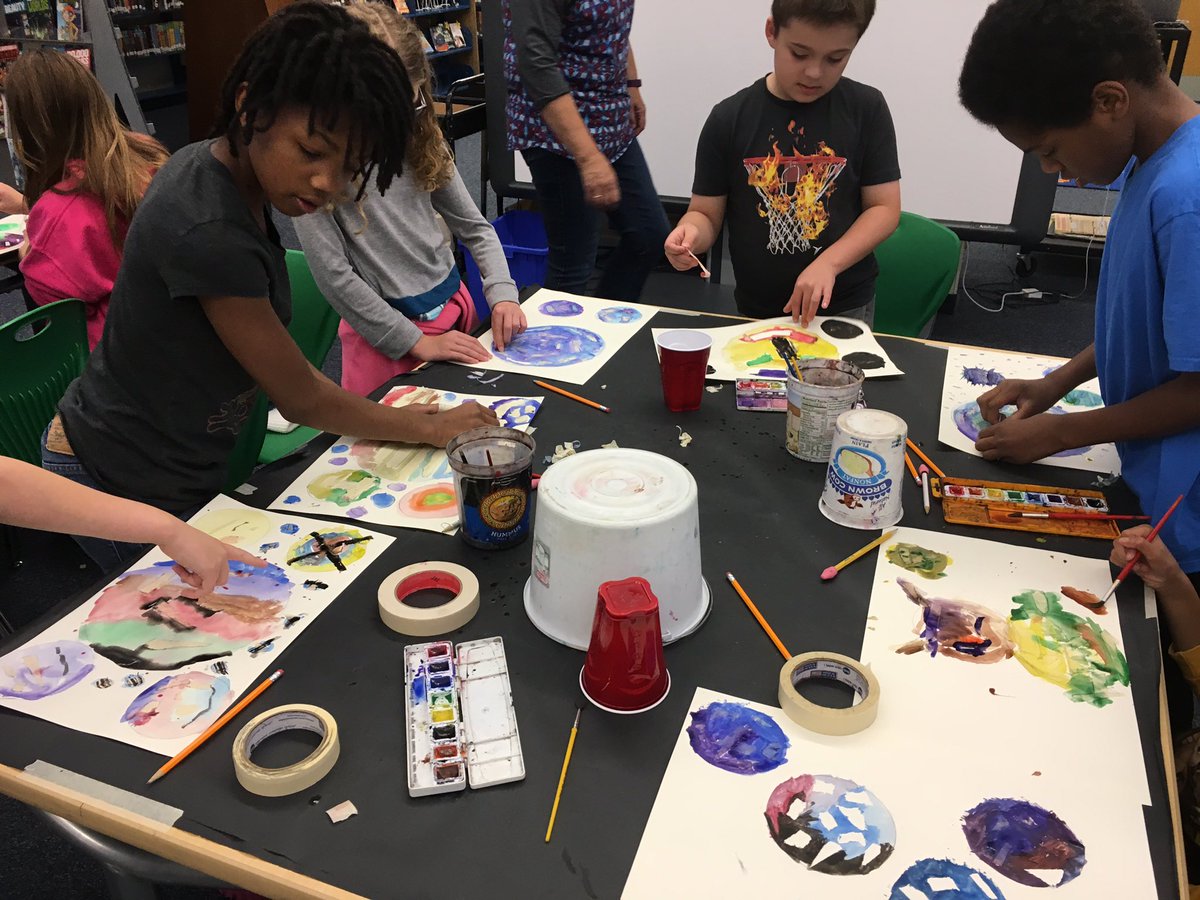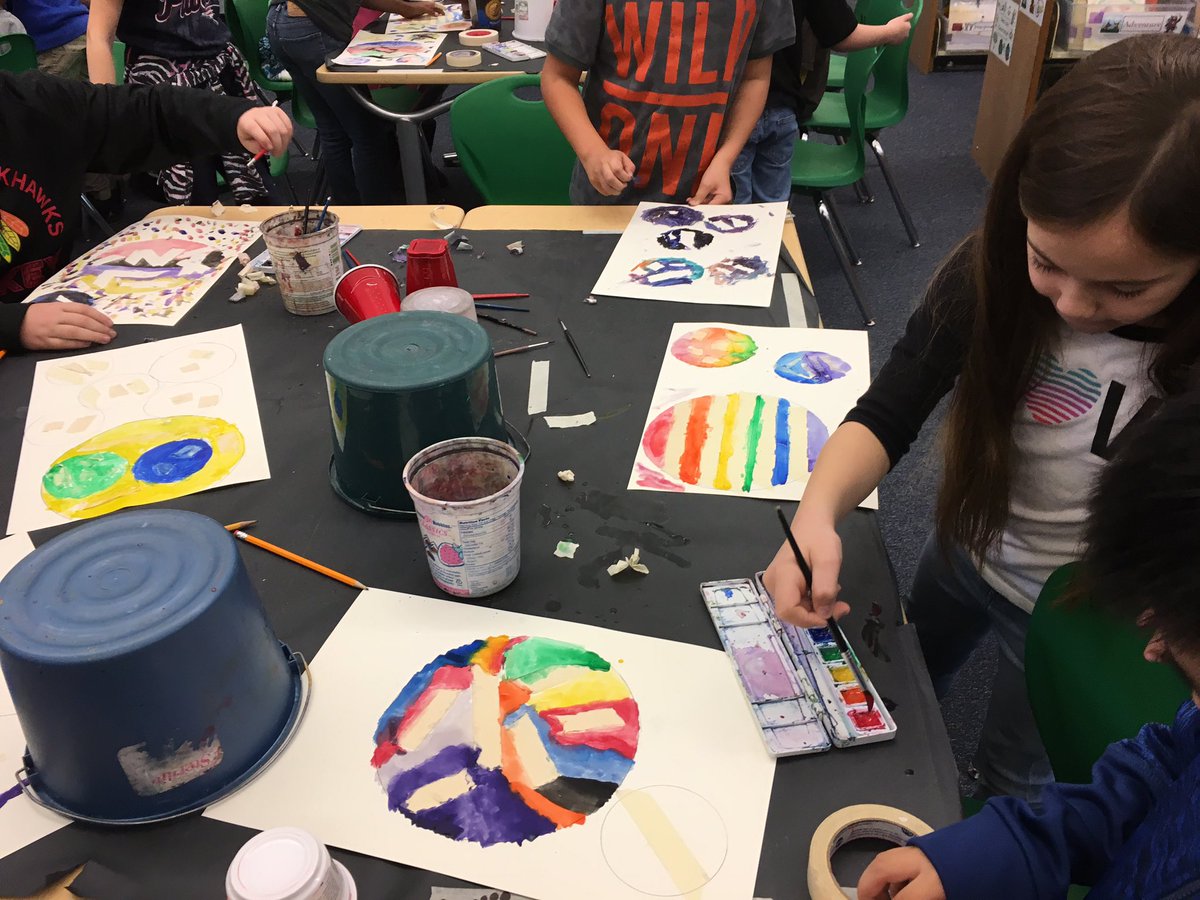FableVision Learning Spotlight Blog
Categories
- Animation-ish 42
- Books 21
- Civics! 2
- Classroom Spotlight 17
- Conferences and Events 20
- Creative Educator 3
- Creativity 25
- Distance Learning 13
- Dot Day 22
- FabClassroom 28
- FabFriday 19
- FabMaker Studio 66
- FabMaker Studio Classroom 13
- FableFive 7
- FableVision Games 3
- Free Educator Resources 36
- HUTCH 1
- Home Activities 5
- In the Classroom 34
- In the News 11
- International Dot Day 23
- Ish 1
- Library 1
- Mapping the World by Heart 7
- Paul Reynolds 10
- Peter H. Reynolds 54
- Professional Development 9
- STEM/STEAM 20
- Storybook Academy 2
- Teacher Spotlight 14
- The Dot 17
- The North Star 2
- Words and Their Stories 1
- Zoombinis 3
Classroom Spotlight: Tudor Elementary Connects the Dots on Dot Day
Michelle Carton is an accomplished global educator and librarian at Tudor Elementary School in Anchorage, Alaska. She is known for her innovative curriculum and has taught in many diverse school environments, but her deep passion for making education relevant and empowering for students while building a lifelong love for learning and exploring has remained a constant. To celebrate International Dot Day, 2017 Michelle and her class connected the dots around the world - so we connected with her to learn more about how she inspires students every day to make their mark!
How did you first learn about Dot Day?
We first learned about Dot Day when I was searching out global and international activities for students. Our first year, we simply read the book, talked about international and global activities. We then created our dots. Our next year, we took it further to talk about how we will make our mark on the world, and why that matters. This year, we took it global and connected with schools all over the world, from Pakistan to Sri Lanka, Canada, and the "lower 48," connected it to the UN Sustainable Development Goals and shared how we will make an impact on being good earth citizens and taking care of each other and the planet.
How does Dot Day tie into your work as a global educator and the mission of Global Education Alaska?
Global Education Alaska initially started out through my Fellowship, Teachers for Global Classrooms sponsored by the U.S. State Department and the International Resources and Exchanges Board. It has now become an opportunity for teachers all over the world to find ideas and resources to take their class global, through workshops, seminars, and simply perusing our website. As a teacher in Alaska, I know our students come from all over the world (we have one the most diverse districts in the country), to a place that is quite isolated and remote, they just need a platform to embrace the world's people, lives, and stories, in a way that will help them embrace their own.
Dot Day is an opportunity for young people to celebrate their marks on a global scale. By connecting with schools around the world, we are making global citizenship more attainable and realizing that young people, no matter where they live, innately want to do good and be a part of the solution. Dot Day does a great job of setting the foundation for International Day of Peace and also United Nations Day, where we delve further into the idea that we are all connected and by learning about the world, understanding the perspectives in the world, and connecting with the world, we are in deed "taking action" which is what it means to be a global citizen. Global Education Alaska provides an opportunity for Alaskan students to learn about the world and for the world to learn about Alaska, the real Alaska (not the one on television).
Do you have tips for educators looking to take their Dot Day celebrations global?
Taking your Dot Day global can be easy, mostly because I have laid out on our website, just how to do that! Also, a few things I learned along the way. Using a tool such as signup.com, makes managing a calendar really simple. Also, making sure to double check a few days before, as we are busy educators, really helps solidify the process. Having students set goals for connecting creates a strong sense of buy-in as well.
My students' goal for next year is to connect both with Emily Arrow to learn the Dot Day song and the team at FableVision to share how they are making their mark on the world AND how they intend to do that in their future as well. What is being done through Dot Day many do not realize: for students to have a voice and see it be heard and honored builds an incredible foundation for growth, both academic, personal/social.
What is your favorite memory from your Dot Day 2017 celebration?
My favorite moment from Dot Day 2017 is when my students who normally are quite disengaged, shy, or overwhelmed by their life outside of school, get incredibly excited, and truly become children again, to laugh, and clap, and remember. Students all year will tell me, "Remember when we connected with _____ for Dot Day, that was really cool." They will remember these moments, all the way into their adulthood. For children to be able to have something to grab onto, even in the most challenging times, is incredibly precious!
How do you inspire students to make their mark and what’s your own inspiration?
Inspiring students to make their mark, care about the world around them, and a desire to be a part of the solution, comes from my own passion for these things. Students want to be engaged and excited; when an educator is, and gently guides students to take suit, they are carving a lane for students to be vulnerable. My own passion comes from being that kid who didn't really engage, teachers just pushed on, struggled in school, went to 9 different elementary schools, was in an out of foster care, and didn't really have something to be passionate about. I had one teacher, in 4th grade, who reached out in a major way and it changed my life. I aim to reach that student, and along the way, bring with me lots of other excitable young people.
I left Corporate America to do something I believed could make an impact on the world, and I haven't stopped yet. Now, I have 350 developing young global citizens who are beginning to see the impact of their dedication and passion. To be a global citizen is to embrace the possible, push past the maybe, and explore the unknown--but to always come out in a much more aware state of being. We are building future peace leaders, one dot at a time.
How did you Make Your Mark on Dot Day?
We love seeing all the Dot activity on social media! Share your Dot Day celebration and tips by using #DotDay and #MakeYourMark.
If you would like to be featured on the FableVision Learning blog, send us a message: info@fablevisionlearning.com.
FableVision Creative Educator Spotlight – Rayna Freedman
For this week's teacher spotlight, we salute Rayna Freedman! Rayna is a 5th grade teacher and Information Technology Specialist at the Jordan/Jackson Elementary School in Mansfield, MA. She is on the board of MassCUE and started a STEM literacy team in her district with several colleagues and administrators. Truly an amazing educator and colleague!
Rayna “connected the dots” between Peter & Paul Reynolds’ book - Full STEAM Ahead! – the first title in the twin brothers’ early reader chapter book series called The STEAM-Powered Adventures of Sydney & Simon. The series features twin mice who are truly creative problem-solvers. The book series helps underscore the notion that the “A” in STEAM education – is more than just mixing art into STEM studies – it is about the creative thinking that leads to invention and innovation. Bringing that concept to life, Full STEAM Ahead! features two curious, creative learners taking on water-themed challenges and learning – including the water cycle and Archimedes’ invention of the water pump.
As so many of our creative educators do, Rayna was able to activate the Full STEAM Ahead! story in the classroom – using it to teach the engineering design process. Freedman’s class chose six water-themed challenges - one teacher-driven, the other five “student-tested and student-approved.” Here’s a sampling of the projects they tackled:
One group created their own irrigation system using a network of paper funnels and straws. They tested their system by repeatedly attempting to successfully move water from the sink to the other end of the classroom, and adjusting the system continually in order to avoid leaks.
Another group placed white flowers in a glass of water and then added food coloring. In order to track the dye’s movement up the roots and into the flower, they attached construction paper to the flowers with an elastic band in order to chart how it travels up. The group also made lab sheets for other classes to use when attempting to replicate this phenomenon.
A third group similarly planted flowers. Instead of food coloring, they simply tracked the growth of the plants using data sheets.
In addition to creating lesson plans for their own purposes, Freedman’s class also helped teach others. Her students helped implement the Emerging Engineers Program, through which they taught some of the basics of STEAM thinking to kindergarten classes.
Thanks to Rayna and her students’ creative “arts & smarts”, we now have lesson plans available for ALL teachers to teach the engineering design process using the Full STEAM Ahead book. Click below for a downloadable PDF featuring details about the student-centered STEAM projects, including materials required for each experiment. Also, Freedman’s students wrote reflections on their experiences, which may be helpful for teachers to keep in mind when introducing this project to their own classes.
Follow Rayna on Twitter at @rlfreedm!











